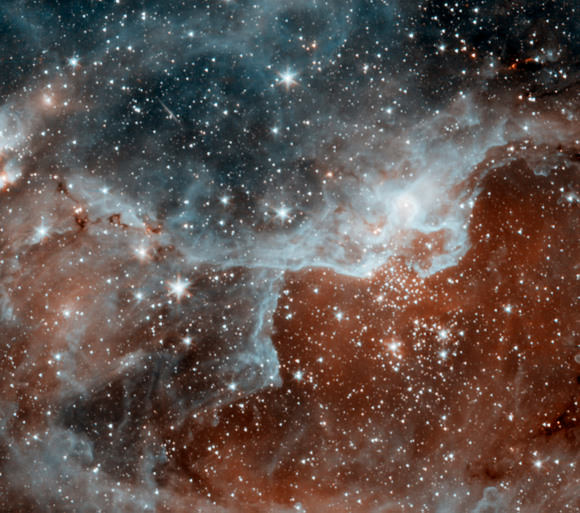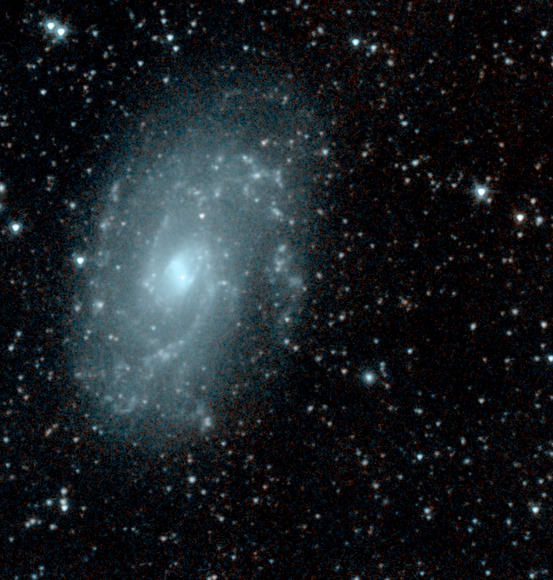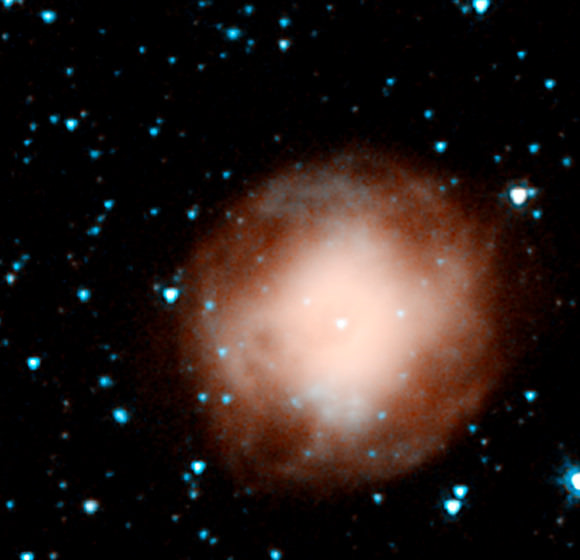[/caption]
The Spitzer Space Telescope has run out of the liquid helium that kept its optics cool — but the scope has already returned compelling new images as if to say:
I don’t need no stinkin’ helium.
At five and a half years, Spitzer’s prime mission more than doubled initial expectations. It finally ran out of liquid helium in May and was retooled for a new “warm mission” that began July 27. With its two remaining infrared channels, the telescope promises to observe with roughly the same sensitivity as a 30-meter ground-based telescope.
The lead infrared image shows the dying star NGC 4361, which was once hot like our Sun before it puffed out.
This next one shows dusty gas in blue and hot clouds in orange in DR22, a cloud bursting with new stars in the Cygnus region of the sky.

The new images were snapped with the two infrared channels that still work at Spitzer’s still-quite-chilly temperature of 30 Kelvin (about minus 406 degrees F). The two infrared channels are part of Spitzer’s infrared array camera: 3.6-micron light is blue and 4.5-micron light is orange.
This last picture shows a relatively calm galaxy called NGC 4145, 68 million light-years away in the constellation Canes Venatici.

All of The new pictures were taken while the telescope was being re-commissioned, on July 18 (NGC 4145, NGC 4361) and July 21 (Cygnus), 2009.
Since its launch from Cape Canaveral, Florida on Aug. 25, 2003, Spitzer has made many discoveries. They include planet-forming disks around stars, the composition of the material making up comets, hidden black holes, galaxies billions of light-years away and more.
Perhaps the most revolutionary and surprising Spitzer finds involve planets around other stars, called exoplanets. In 2005, Spitzer detected the first photons of light from an exoplanet.
Warm Spitzer will address many of the same science questions as before. It also will tackle new projects, such as refining estimates of Hubble’s constant, or the rate at which our universe is stretching apart; searching for galaxies at the edge of the universe; characterizing more than 700 near-Earth objects, or asteroids and comets with orbits that pass close to our planet; and studying the atmospheres of giant gas planets expected to be discovered soon by NASA’s Kepler mission.
“The performance of the two short wavelength channels of Spitzer’s infrared array camera is essentially unchanged from what it was before the observatory’s liquid helium was exhausted,” said Doug Hudgins, the Spitzer program scientist at NASA Headquarters in Washington.
Credit for all images: NASA/JPL-Caltech
Source: NASA’s Spitzer site and a press release through the American Astronomical Society (AAS).


“At five and a half months”: meaning years, I guess.
“the liquid helium that kept its optics cool”: I would have thought the camera(s) was the cooled part, but checking Wikip: “The primary mirror is 85 cm in diameter, f/12 and made of beryllium and was cooled to 5.5 K. ”
So, my bad.
I love those colors!
Oops, years! Thanks!
Manu, I think the mirrors were cooled too to eliminate thermal mismatch, especially since it operates at two temps (before and after helium). They took precautions not to have nitrogen freeze-contaminate the mirrors.
Must … resist … pointing … out … that … inert … gases … don’t … smell … unless … contaminated …
Damn!
I’ll take my jacket and let myself out now.
ESA’s Herschel is now up and running at the L2 lagrange point with plenty of cryocooling and has already shown higher resoultions than cold Spitzer so these two scopes whould provide us with some excellent astronomy.
Hopefully Spitzer can keep contributing useful scientific data until a successor like JWST is ready for data collection. Long live (warm) Spitzer 🙂
Well, I got only half the story right. Obviously the optics will radiate as well, even if mirrors does it poorly. My bad, and sorry Manu if you read this.